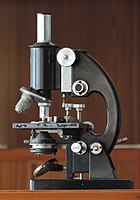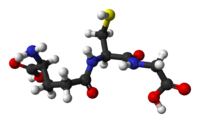
In vivo analysis of renal epithelial cells in zebrafish.
Sign Up to like & getrecommendations! Published in 2019 at "Methods in cell biology"
DOI: 10.1016/bs.mcb.2019.04.016
Abstract: The zebrafish kidney has been used effectively for studying kidney development, repair and disease. New gene editing capability makes it a more versatile in vivo vertebrate model system to investigate renal epithelial cells in their… read more here.
Keywords: vivo analysis; biology; cells zebrafish; analysis renal ... See more keywords

Distinguishable multi-substance detection based on three-channel NIR fluorescent probe in physiology and pathology of living cells and zebrafish
Sign Up to like & getrecommendations! Published in 2021 at "Chinese Chemical Letters"
DOI: 10.1016/j.cclet.2021.05.026
Abstract: Abstract Mitochondria is the main organelle for the production of reactive sulfur species (RSS), such as homocysteine (Hcy), cysteine (Cys), glutathione (GSH) and sulfur dioxide (SO2), etc. These compounds participate in a large number of… read more here.
Keywords: fluorescent probe; pathology; cells zebrafish; living cells ... See more keywords

Design, synthesis and bioimaging application of a novel two-photon xanthene fluorescence probe for ratiometric visualization of endogenous peroxynitrite in living cells and zebrafish
Sign Up to like & getrecommendations! Published in 2020 at "Dyes and Pigments"
DOI: 10.1016/j.dyepig.2020.108232
Abstract: Abstract Two-photon (TP)-based ratiometric fluorescence probe has become an efficient and attractive technique for fluorescence imaging studies of biological events. Therefore, construction of some new type functional TP ratiometric fluorescent dyes has attracted great attention.… read more here.
Keywords: probe; two photon; fluorescence; fluorescence probe ... See more keywords

3‑Bromo‑5‑(ethoxymethyl)‑1,2‑benzenediol inhibits LPS-induced pro-inflammatory responses by preventing ROS production and downregulating NF-κB in vitro and in a zebrafish model.
Sign Up to like & getrecommendations! Published in 2019 at "International immunopharmacology"
DOI: 10.1016/j.intimp.2018.11.021
Abstract: The anti-inflammatory effects of 3‑bromo‑5‑(ethoxymethyl)‑1,2‑benzenediol (BEMB) from Polysiphonia morrowii were evaluated in lipopolysaccharide (LPS)-induced RAW264.7 cells and zebrafish embryo. BEMB showed anti-inflammatory effects by inhibiting the production of nitric oxide (NO) and reactive oxygen species… read more here.
Keywords: lps induced; production; ethoxymethyl benzenediol; cells zebrafish ... See more keywords

A Reaction-Based Ratiometric and Colorimetric Chemosensor for Bioimaging of Biosulfite in Live Cells, Zebrafish and Food Samples.
Sign Up to like & getrecommendations! Published in 2020 at "Journal of agricultural and food chemistry"
DOI: 10.1021/acs.jafc.0c03983
Abstract: In this work, a reaction-based ratiometric and colorimetric sensor was designed and synthesized for probing bisulfite (HSO3-) by coupling coumarin (CM) with barbituric (BA) moiety. Further tests have shown that CM-BA has high selectivity and… read more here.
Keywords: based ratiometric; ratiometric colorimetric; cells zebrafish; hso3 ... See more keywords

Hormetic effect of panaxatriol saponins confers neuroprotection in PC12 cells and zebrafish through PI3K/AKT/mTOR and AMPK/SIRT1/FOXO3 pathways
Sign Up to like & getrecommendations! Published in 2017 at "Scientific Reports"
DOI: 10.1038/srep41082
Abstract: Hormesis is an adaptive response of living organisms to a moderate stress. However, its biomedical implication and molecular mechanisms remain to be intensively investigated. Panaxatriol saponins (PTS) is the major bioactive components extracted from Panax… read more here.
Keywords: hormetic effect; cells zebrafish; panaxatriol saponins; pc12 cells ... See more keywords

A mitochondria-targeted fluorescent probe for monitoring endogenous cysteine in living cells and zebrafish.
Sign Up to like & getrecommendations! Published in 2021 at "Chemical communications"
DOI: 10.1039/d1cc03307g
Abstract: At the organelle level, pathogenesis due to abnormal concentrations of cysteine (Cys) is of great significance for the early diagnosis and treatment of related diseases. Generally speaking, organelle localization requires the participation of specific target… read more here.
Keywords: mitochondria targeted; fluorescent probe; probe; cells zebrafish ... See more keywords

Enhanced Cas12a editing in mammalian cells and zebrafish
Sign Up to like & getrecommendations! Published in 2019 at "Nucleic Acids Research"
DOI: 10.1093/nar/gkz184
Abstract: Abstract Type V CRISPR–Cas12a systems provide an alternate nuclease platform to Cas9, with potential advantages for specific genome editing applications. Here we describe improvements to the Cas12a system that facilitate efficient targeted mutagenesis in mammalian… read more here.
Keywords: editing mammalian; cas12a editing; enhanced cas12a; cells zebrafish ... See more keywords

Confocal Identification of Immune Molecules in Skin Club Cells of Zebrafish (Danio rerio, Hamilton 1882) and Their Possible Role in Immunity
Sign Up to like & getrecommendations! Published in 2022 at "Biology"
DOI: 10.3390/biology11111653
Abstract: Simple Summary The immune systems of fish can respond rapidly to biological, physical, and environmental stresses and defend the body against pathogens. The skin is the organ most in contact with the external environment and… read more here.
Keywords: immune molecules; cells zebrafish; immune; immune system ... See more keywords

Novel (1E,3E,5E)-1,6-bis(Substituted phenyl)hexa-1,3,5-triene Analogs Inhibit Melanogenesis in B16F10 Cells and Zebrafish
Sign Up to like & getrecommendations! Published in 2018 at "International Journal of Molecular Sciences"
DOI: 10.3390/ijms19041067
Abstract: The present study aimed to evaluate the anti-melanogenic activity of 1,6-diphenyl-1,3,5-hexatriene and its derivatives in B16F10 murine melanoma cells and zebrafish embryos. Twenty five (1E,3E,5E)-1,6-bis(substituted phenyl)hexa-1,3,5-triene analogs were synthesized and their non-cytotoxic effects were predictively… read more here.
Keywords: b16f10; cells zebrafish; phenyl hexa; substituted phenyl ... See more keywords

Recognition of Thiols in Living Cells and Zebrafish Using an Imidazo[1,5-α]pyridine-Derivative Indicator
Sign Up to like & getrecommendations! Published in 2019 at "Molecules"
DOI: 10.3390/molecules24183328
Abstract: A new cyan fluorescent probe, MIPY-DNBS, using an imidazo[1,5-α]pyridine derivative as the fluorophore and 2,4-dinitrobenzensufonate as the recognition site for the selective detection of thiols (Cys, GSH, and Hcy), was designed and synthesized. Probe MIPY-DNBS… read more here.
Keywords: imidazo pyridine; cells zebrafish; thiols living; recognition ... See more keywords